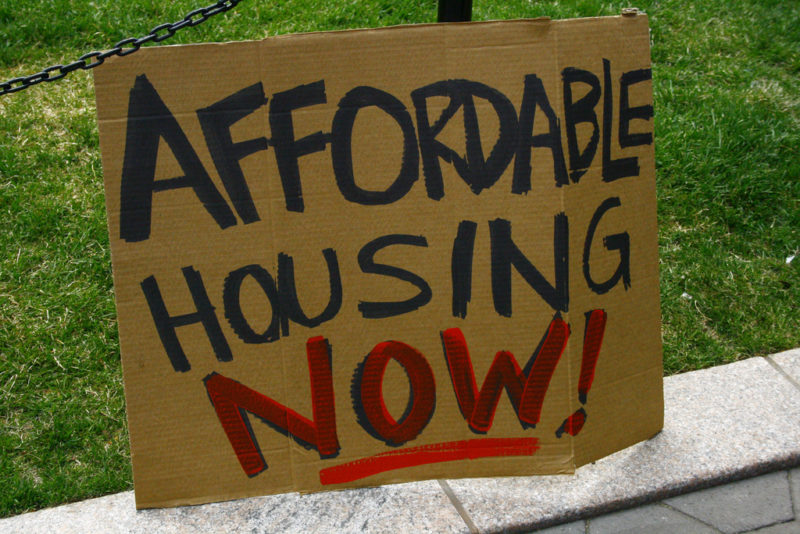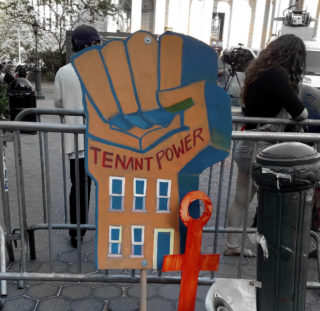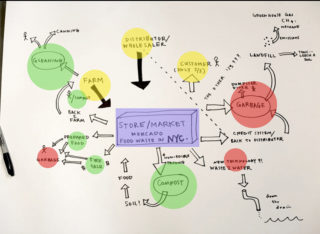My Project: Housing Literacy
As I begin the second year of my PhD program in sociology, I have started a two-year fellowship as a Digital Publics Fellow for the Center for the Humanities, during which I will develop a project around rent regulation in New York City. The project is entitled “Housing Literacy” and will involve developing a website that synthesizes and centralizes resources around rent regulation in New York City. The goal is to frame housing issues in publicly accessible language; identify the most valuable information that needs to be communicated and where to access it; as well as create resources that can be used by tenants’ rights groups, tenants, and their advocates to increase housing literacy and support their needs.
With “Housing Literacy,” I hope to sort through, filter, and organize the mountain of information available on rent regulation in New York City so that all tenants have a better understanding about what rent regulation offers and the standard protections it affords. This project is as much about translating this information into easily accessible language as it is about bringing it to renters. Below is an overview of some of the rights that rent-regulated tenants should know about and examples of what types of material will be accessible on the website.
The Need for Housing Literacy
Living in New York City can be difficult for a lot of reasons, but the high cost of living is one of the most salient issues for many New Yorkers. Generally speaking, households spend the largest share of their income on housing costs. However, since New York is one of the most expensive housing markets in the country, that share is particularly high. According to The Furman Center’s National Rental Housing Landscape Report,
In 2015, 50.0% of renter households in the New York metro[1] were rent burdened[2] and approximately 27.3% of renter households were severely rent burdened. Moreover, households earning the median income in the New York metro ($68,930 in 2015) could afford 59.3% of recently available rental units in 2015, down from 68.1% in 2006. Households earning half of the New York metro's median income ($34,470 in 2015) could afford 12.9% of recent rentals in 2015, about the same as 13.4% in 2006.
In other words, not only is renting in New York City becoming more expensive, but the share of housing that is affordable to households that earn median incomes in New York is shrinking. This is a concern for the majority of New Yorkers because, according to the latest New York City Housing and Vacancy Survey, 64 percent of all New York Housing stock is rental stock.[4] What’s more, not all renters in New York have similar experiences or enjoy the same protections.
Rent-Regulated Tenants vs. Market Rate Tenants
The big divide is between renters living in market-rate housing units and those living in rent-regulated housing units. In response to inflationary costs that resulted from the United States’ involvement in World War II and the Korean War, the federal government established price controls in order to limit the negative effects of inflation. While these rent laws have changed since their conception, they have been fairly consistent since 1969, where more familiar price controls and protections were established and are still in use today.
Once established on the federal level, these laws had staying power in New York City, partially because they helped to make housing more affordable for New Yorkers. Over the years, a large share of rent-regulated units have been deregulated; that is, the rents that a landlord can legally charge are no longer subject to any specific limits or control. Rather, landlords of deregulated units can charge whatever the market will bear and people will pay.
The Basics
Tenants living in a rent-regulated apartment have some basic rights, and knowing these rights can defend against being taken advantage of by dishonest landlords (which is very common) and ensure the stability and protections that rent regulation was designed to offer.
Regulated Rent Increases. The first major right for rent-regulated tenants is that rent increases are regulated. Among other reasons, the Rent Guidelines Board meets every year to decide the allowable rent increases that landlords can charge their rent-regulated tenants in either one or two-year leases. Generally they are capped at a certain percentage of the current rent. For example, if the rent in a rent-stabilized apartment is $1,000 and the Rent Guidelines Board has allowed for a 3 percent increase on one-year leases and a 5 percent increase on two-year leases, then the legal allowable increases that the landlord can charge are $30 on the one-year lease renewal and $50 on the two-year, for a total of $1,030 and $1,050, respectively.
Guaranteed Lease Renewal. The second major right that rent-regulated tenants have is the right to renew their leases whenever they end. There are two general means of ending tenancy: through eviction or recovery. Although it is generally difficult for a rent-regulated tenant to be evicted, they can be if they violate the lease, illegally sublet the unit, are a nuisance to other renters, or consistently fail to pay rent. The unit can be recovered by the landlord in a few instances, most commonly if the landlord desires to use the apartment for personal use or if they can demonstrate that the tenant maintains a primary residence elsewhere. Otherwise, the landlord has to offer tenants a new lease whenever their current lease ends.
Warranty of Habitability. Before 1975, a tenant was obligated to pay rent regardless of whether or not the owner provided a habitable space. That changed when the State adopted a warranty of habitability for all residential leases. Essentially, this means that all leases are deemed “a sale of shelter and services” by the landlord to the tenant.[5] This implies that the unit must be (1) fit for human habitation, (2) is used accordingly for its intended purposes, (3) and that tenants are not subjected to conditions that might endanger their lives or be detrimental to their lives, their health, or their safety. While all tenants, regardless of regulation status, are eligible to seek abatements and/or repairs when the warranty of habitability is violated by landlords, the “required services” protected by the warranty of habitability can sometimes be more broadly interpreted for rent-regulated tenants. Additionally, rent-regulated tenants have the right to renew their leases under the same conditions that they first signed. This means that no new additional requirements are permitted to be added to a lease when it is being renewed and that rent-regulated tenants may be entitled to retroactive rent abatements or rent compensation if landlords violate the warranty of habitability.
Protection Against Abuses. In order to equalize bargaining rights between tenants and landlords, rent regulation imposes specific limitations on rent-regulated tenants. For example, tenants can sublet their unit for up to two years, as long as the landlord agrees to the sublet and the tenant can prove that they intend to return at the end of the tenancy and that the unit will be their primary residence. The concession for this right, however, is that it is illegal for tenants to make money off these sublets, and can be grounds for eviction. Spouses or family members (under specific conditions) are entitled to succession rights if they have lived with the primary tenant on the lease for two consecutive years. The category of “family members” can be extended to persons who can demonstrate financial and emotional dependence on each other. In other words, under certain conditions, caretakers who live with tenants can be extended rent-regulated tenancy status. In short, while there are some limits on what rent-regulated tenants can or cannot do, the protections that rent regulation provides tenants goes far beyond simply controlling rent prices.
More information about tenant's basic rights can be found here.
Housing Literacy: A Website
As housing prices become less affordable for many New Yorkers, the importance of understanding and preserving the protections already in place has become even more pressing.
In order to gather and organize this material in an accessible format, “Housing Literacy” will culminate in a website that will contain a wide range of information, resources, and tools for the rent-regulated constituency. Here are some materials I plan to include on the website: a podcast series covering key issues related to housing court and legal struggles, an annotated lease, informative blog posts from various stakeholders’ perspectives, tenant narratives, links to relevant articles and research, glossary terms, and a catalogue of housing apps used by those in the field.
As I work on developing these resources and organizing this information in the coming months, I welcome any and all suggestions about what type of information to include and how to best present it. I can be reached at [email protected].
[1] Metropolitan areas refer to Core-Based Statistical Areas, which are determined by the Office of Management and Budget (OMB) and used in US Census measures, among other things. They consist of one or more counties anchored by an urban center of at least 10,000 people plus adjacent counties that are socioeconomically tied to the urban center by commuting. https://www.census.gov/prod/cen2010/doc/sf1.pdf#page=619
[2] Rent burdened household spend more than 30% of pre-tax income on rent and severely rent burdened households spend more than 50% of pre-tax income on rent.
[3]SOURCE | 2017 The Furman Center’s National Rental Housing Landscape Report: http://furmancenter.org/nrhl/data/new-york
[4]SOURCE | 2014 NYC Housing and Vacancy Survey: http://www1.nyc.gov/assets/hpd/downloads/pdf/2014-HVS-initial-Findings.pdf
[5] SOURCE| Intro to the Board: http://www.nycrgb.org/html/about/intro%20PDF/mainfeaturesofRS.pdf



